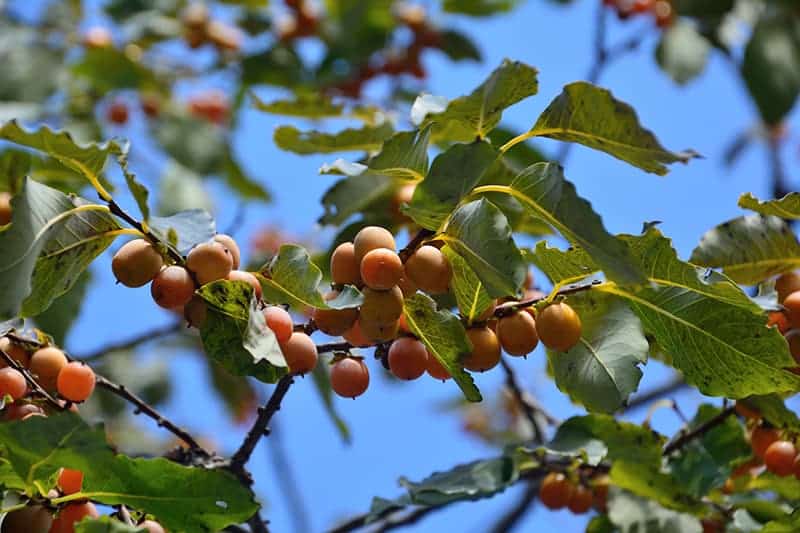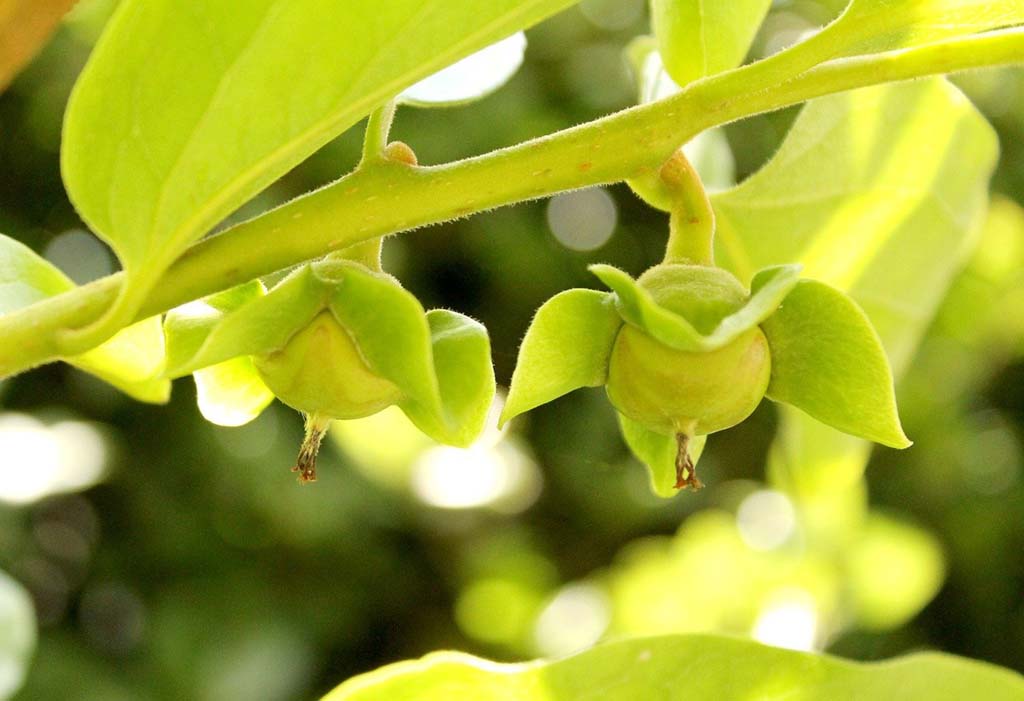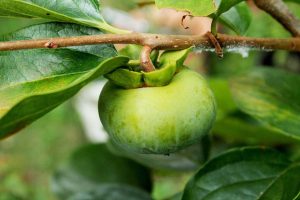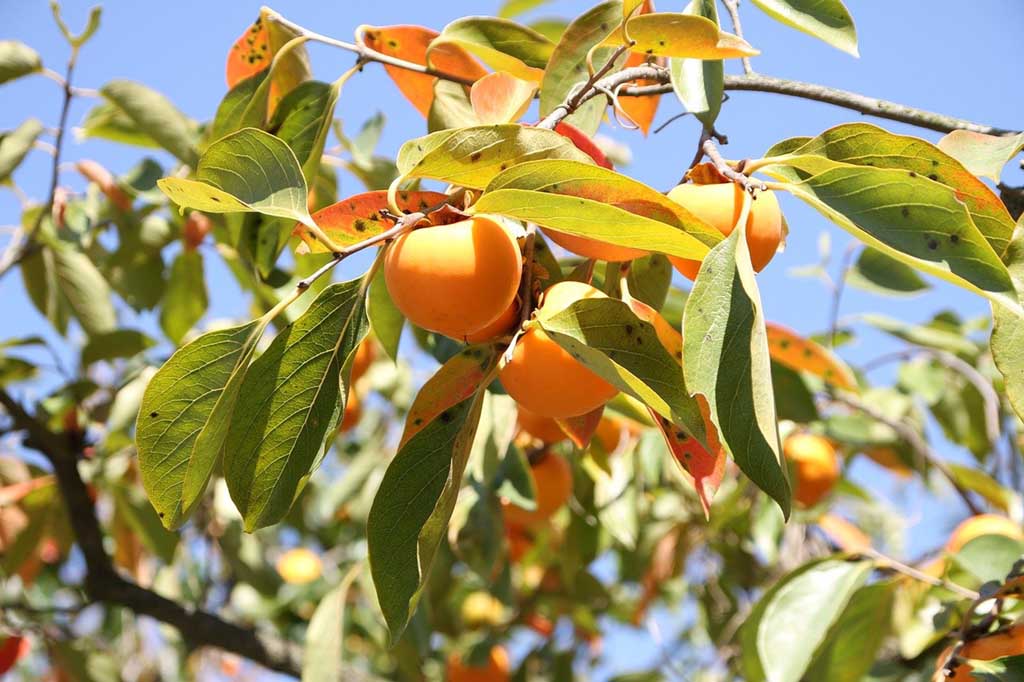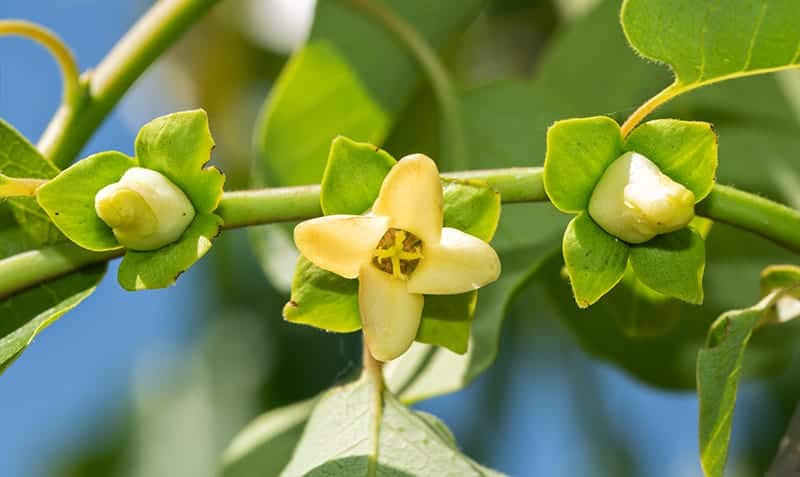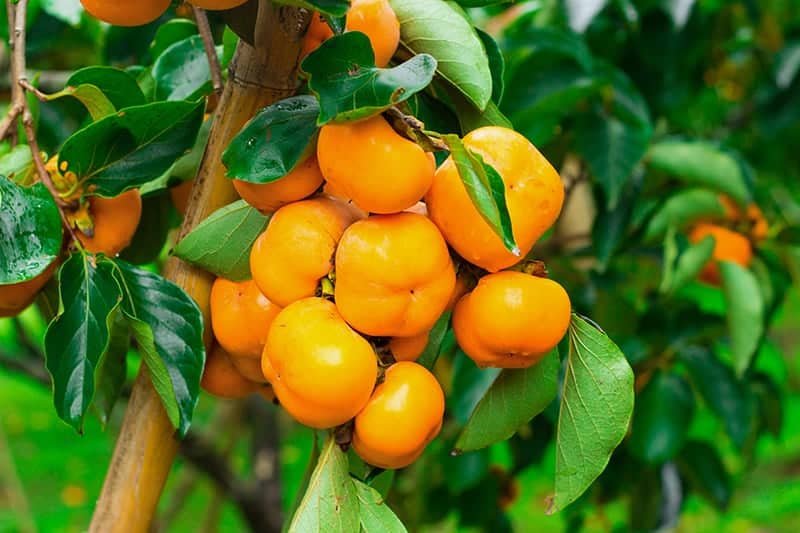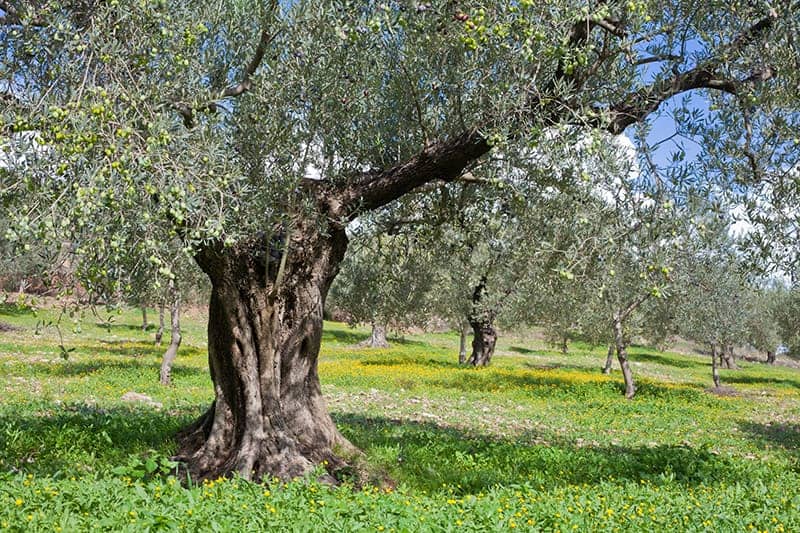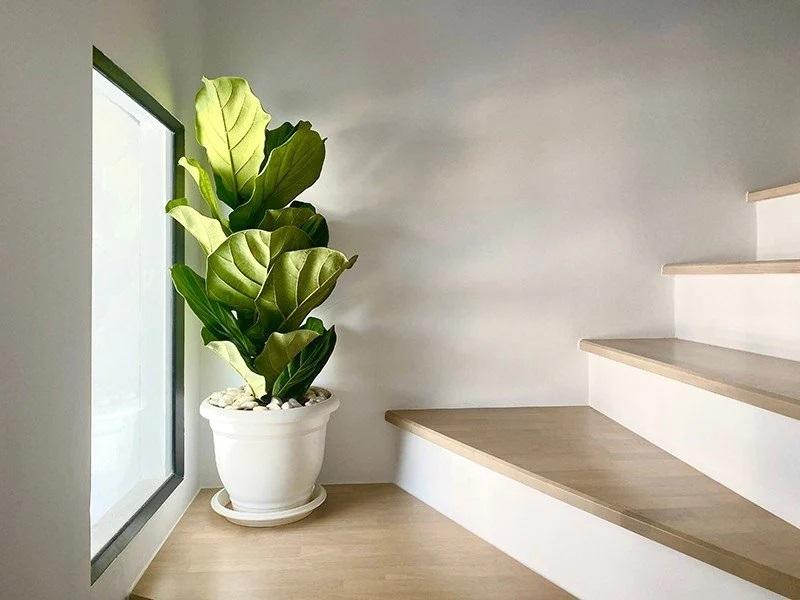- Home >
- Persimmon Trees
Persimmon Trees for Sale - Buying & Growing Guide
Do You Know Your Growing Zone? i Growing zones help determine if a particular plant is likely to grow well in a location. It identifies the average annual minimum winter temperatures across the U.S. provided as a map by the USDA.
3 Results
Persimmon Trees – Buying & Growing Guide
Persimmons come in two varieties: American and Asian. The American type grows wild in much of the southeastern part of the country, and has fruit that must be ripened on the tree; eating an unripe one is an unpleasant sensation. Asian persimmons are more commonly grown for their sweet fruit. Both types are attractive trees that benefit the landscape.
Persimmon Tree Overview
Quick Facts
| Origin | Eastern United States |
| Scientific Name | Diospyros virginiana |
| Family | Ebenaceae |
| Type | Fruit tree |
| Common Names | Persimmon Tree, American Persimmon Tree, Common Persimmon Tree |
| Toxicity | Non-toxic |
| Light | Full sun |
| Watering | Moist, well-draining soil |
| Height | Up to 35 feet |
| Pests | Generally pest-free |
How to Grow Persimmon Trees
How to plant persimmon trees
Plant your persimmon tree in a spot that gets at least six to eight hours of full sun per day. If you are planting more than one tree to ensure pollination, make sure you leave adequate space between them. American persimmons should be sited 30–50 feet apart, while Asian persimmons should be 15–20 feet apart.
Dig a hole twice as wide as the root ball and a little deeper. Tease out any encircling roots in the root ball to avoid having them girdle the tree and eventually kill it. Mix compost, leaf mold, or another organic amendment into the bottom of the hole and place your sapling on top of it. Backfill (replace the dirt you removed) with the compost-enhanced soil and tamp down to eliminate air holes.
Water your new tree deeply after planting and every few days for its first season. Mulch your tree with several inches of organic material, such as bark chips or leaf mold, but keep the mulch away from the trunk itself.
How to achieve maximum results
Achieving maximum results begins with choosing the appropriate tree for your space. Asian persimmons are fairly short, maxing out around 10 feet tall, and are appropriate for smaller yards. American persimmons, however, may grow to 50 feet and would overwhelm a smaller space. Read the description of your chosen cultivar carefully. Some persimmons are self-pollinating, while others need an additional tree in order to set fruit.
How to Care for Persimmon Trees
Watering and nutrients
Persimmon roots are deep but slow growing, and the tree will need supplemental watering for the first season after planting. Your tree does best if it gets about one inch of water per week, so consider setting up a rain gauge near the plant so you’ll know when you need to water.
Don’t fertilize your persimmon tree when you plant it. They are not heavy feeders and the roots are sensitive to fertilizers. After several years, when the tree is bearing fruit, a light application of a product formulated for fruit trees is sufficient in the spring.
Pollination
American persimmons usually need to have another tree in close proximity for pollination, although Asian varieties are sometimes self-pollinating. Young trees may not flower until they are up to seven or eight years old. Pollination happens due to the action of both wind and flying insects, such as honeybees.
Pruning
Prune your persimmon in late winter or early spring, before bud break. Prune first to remove dead or diseased branches, or any branches that are rubbing against each other. Then prune back all lateral branches by about one-third, making a clear, angled cut about a quarter inch from a bud that is facing outward.
Pests and diseases
Insects you may see on your persimmon tree include mites, thrips, and whitefly. Scale can also be a problem, although these insects can be rubbed off the branches or trunk with a piece of heavy cloth. Your county extension agent is an excellent source of information on managing the prevalent pests and diseases in your region.
Crown gall can stunt your tree’s growth and lead to a light or nonexistent harvest. Persimmons may also suffer from anthracnose, which appears as black spots on the leaves, and sunscald, which can be managed by painting the trunk with white paint in the winter or applying a tree guard.
Harvesting
Persimmons ripen from September through November, and may not be ready for picking until after your first frost. The fruit is very fragile and must be hand-picked carefully and stored in a single layer. Persimmons will continue to ripen after they are picked, so harvest them when they have achieved their full color but are still somewhat hard.
Light
Persimmon trees require full sun to thrive and produce plenty of luscious red fruits. They like to be in constant sun all day and will struggle in an area of poor light. When persimmon trees are young, make sure they are not shaded by fences or nearby buildings as they will exhibit stunted growth. Persimmon trees grown in poor light will also struggle to produce fruit, or they will bear fruit that is small and lacking juice.
Temperature
Persimmon trees are very hardy and can be grown in climates that experience cold winters. American persimmon trees are capable of surviving the coldest temperatures, as they will tolerate temperatures as low as -25 degrees Fahrenheit. Asian persimmon trees are also cold-hardy but not to the extent of American persimmon trees. Asian persimmon trees can survive in temperatures as low as zero. If you live in a colder climate and wish to grow persimmon fruit, then the American persimmon tree will be the better option so that it doesn’t die during winter.
Propagation
Persimmon trees can be grown from seed, but these will not produce exact replicas of the parent tree. Persimmon tree seeds are genetically unpredictable, so you can end up with a different variety of persimmon tree than the one you wanted. Trees grown from seeds also take longer to reach a good size than those grown from cuttings.
Persimmon trees can be propagated from stem cuttings, and these will produce exact clones of the parent tree. To propagate from stem cuttings, first. you need to deeply water the parent tree a few days before you take the cutting. This is because cuttings containing moisture are much more likely to successfully root than dry cuttings, which are more likely to struggle and die.
When taking a cutting, choose a semi-hardwood stem which is around a year old. The cutting should be around six inches long and can be taken any time of year, though during the fall would be preferable. You will then need to make a vertical cut of around one inch in length on either side of the base of the stem. This will allow more moisture to be absorbed during the rooting process, with a greater chance of success.
After this, you will need a pot of well-draining potting soil. The type of soil isn’t especially important, so long as it will hold moisture but also be well-draining. Make a hole in the center of the soil with a pencil and insert your stem cutting. You can use rooting hormone if you wish, but it isn’t essential.
Once the stem has been gently tucked in with soil, water it generously. You can then put a plastic bag over the pot to create humidity and mimic the environment of a glass house. In order to root successfully, persimmon tree cuttings require a lot of direct light, much more than is required for most plant propagation with stem cuttings. You should position it in a space where it will receive around 12 hours of light each day. If this isn’t achievable with sunlight, you can use grow lights over the pot to supplement the natural sunlight.
Rooting can take anywhere from a few weeks to a few months, but once you start to see new growth on the stem, it means a new root system has developed below the soil. At this point, you should remove the plastic bag and keep the young tree inside for a few more weeks before transplanting in its final position outside.
Persimmon Tree Varieties
‘Chocolate’
This tree bears fruit that is astringent when seedless. The fruits are oblong shaped and are of a small to medium size. The skin is red-orange with brown interior flesh, which is where this variety gets its name. These fruits must be ripened until they are soft in order to be eaten, which usually happens in late October to early November. The tree itself grows vigorously to be very large and features many beautiful blossoms (Growables).
‘Fuyu’
This is the most commonly grown non-astringent persimmon tree grown in Florida and is the most widely cultivated persimmon tree in the world. Its popularity is not surprising as it a self-pollinating tree and therefore will produce fruit by itself without needing a pollinating partner. It is also well-known for producing an abundance of large and sweet tasting fruits.
The fruits, which are ripe in November, can be eaten straight from the tree or work well sliced up in salads. They have a crisp texture similar to an apple and a pleasant taste. Another benefit of this variety is that it is pest free. The outer skin of these persimmons is orange-red, while the inner flesh is a speckled deep orange.




